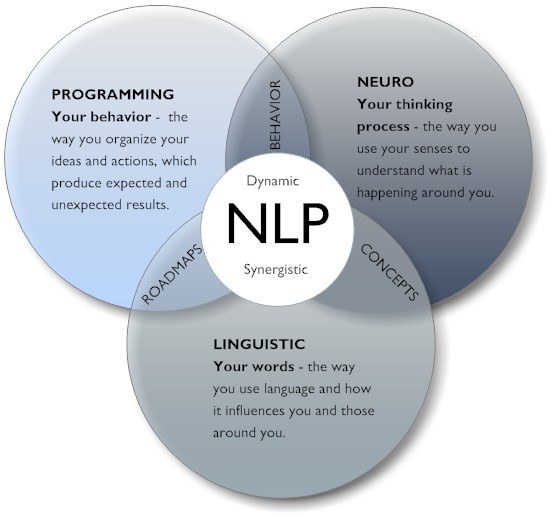 I once stated that for me to even consider the possibility of height increase after one’s growth plates are closed, I must look into every single possible way and method. I would check at every single idea, method, or strategy out there no matter how crazy, illogical, and stupid. I am willing to look at all the options available. That is why that I wanted to explore the topic where we can grow taller using neuro-linguistic programming nlp. Neuro-linguistic programming is a very unique subject that is a combination of communication theory, psychotherapy, pseudo-neuroscience, and personal development.
I once stated that for me to even consider the possibility of height increase after one’s growth plates are closed, I must look into every single possible way and method. I would check at every single idea, method, or strategy out there no matter how crazy, illogical, and stupid. I am willing to look at all the options available. That is why that I wanted to explore the topic where we can grow taller using neuro-linguistic programming nlp. Neuro-linguistic programming is a very unique subject that is a combination of communication theory, psychotherapy, pseudo-neuroscience, and personal development.
It was developed in the 70s by two guys Richard Bandler and John Grinder who modeled some of the most successful psychotherapist of the day, specifically Milton Erickson, Virginia Satir, Fritz Perls, and Noam Chomsky. While originally the subject of NLP was developed as only a subset of both communication theory and psychotherapy, individuals who managed to learn about the theory learned how to apply it towards mental and psychiatric disorders, seeming to be used to cure phobias, bad habits, depression, and a few other non major psychiatric disorders. Eventually it became a very big subject and during the 70s and 80s the study of NLP became very influential and well known.
Over the years the influence of NLP has decreased and most scientists have shown that NLP is a form of pseudoscience which is full of errors from biases and inconsistent results. NLP is used as an example of pseudoscience for facilitating the teaching of scientific literacy at the professional and university level. Quite possibly the one person who has managed to spread the knowledge of NLP the most is personal life coach Anthony Robbins who became very famous and well known in the 80s for his firewalls, late night infomercials, and application of NLP. The entire subject of NLP would had been discredited if not for the fact that for certain live TV events, when NLP teachers and practitioners were put to the test to fix and help people suffering through phobias and bad habits, their methods were effective at least temporarily to cure the people on tv.
Some people view and treat NLP almost like a religion, like the infamous Scientology. My personal view of the subject after studying it extensively for a few months is that the subject can be a self contained, stand alone subject that can be used as a type of operating system and personal philosophy on how to view life. So NLP can indeed be assimilated into a person’s frame in life. From NLP, a few terms were taken and their usage have gotten into the public consciousness like frames, framing, intension, anchoring, fractionation, human modeling, rapport building, eye accessing cues, etc.
Here is my own opinion on the subject. The effectiveness of NLP is probably mostly just the effect of the placebo effect and confirmation bias. However, that should not stop a person from at least testing it. Most NLP practitioners would ask that one judge them and their practiced art through results, not just from logical scientific experiments.
It is absolutely true that the human mind is still too hard to fully understand so any science or art that tries to map and explain how the mind works will not be fully effective, but only somewhat. Like psychotherapy and psychology, the help a person can get through meeting a professional may not lead to complete resolution of one’s mental issues. It is not a pure science like Physics and Chemistry where things can be easily quantified and described through precise equations. So the main point is the while the foundation of NLP may not be based to true science, I ask the reader to “suspend the critical factor”. Yes, that is also a NLP concept, it means to hold off on being a cynic and sceptic just for long enough until i get my message through to you and you are fully willing to accept and process the meaning and intention of my message.
From the Wikipedia article on the subject, I would cite a few critical points from HERE
Scientific criticism
The term “Neuro-linguistic programming” has been characterized as pseudo-scientific. Witkowski (2010) writes that “NLP represents pseudoscientific rubbish, which should be mothballed forever.” Roderique-Davies (2009) states that “neuro” in NLP is “effectively fraudulent since NLP offers no explanation at a neuronal level and it could be argued that its use fallaciously feeds into the notion of scientific credibility”. Witkowski (2010) also states that at the neuronal level NLP provides no explanation at all and has nothing in common with academic linguistics or programming. Similarly, experimental psychologist Corballis (1999) in his critique of lateralization of brain function (the left/right brain myth), states that “NLP is a thoroughly fake title, designed to give the impression of scientific respectability”.
Witkowski (2010) states that NLP uses impressive sounding yet questionable expressions such as; pragmagraphics, surface structure, deep structure, accessing cues, non-accessing movement etc. Canadian skeptic and psychologist Barry Beyerstein (1995) also says that NLP contains terms such as eye accessing cues, metamodeling, metaprogramming, neurological levels, representational systems, and submodalities, intended to obfuscate and to give the false impression of a scientific discipline. He says “though it claims neuroscience in its pedigree, NLP’s outmoded view of the relationship between cognitive style and brain function ultimately boils down to crude analogies.” Furthermore Beyerstein (1995) believed that NLP has helped popularize myths about the brain and neurology. He believes that the aphorism “you create your own reality” promotes a relativistic perspective and only seeks to gain immunity from scientific testing.
Grant Devilly (2005), a clinical psychologist, identified NLP as an early example of a power therapy. Devilly claims that these so called power therapies share characteristics of pseudo-science including: the promotion of unobtainable goals, rationalization traps, manufactured credibility, a set of specific beliefs, self generated persuasion, vivid appeals, the use of common misconceptions, and attacks on critics through the use of innuendo.
NLP has been criticized alongside theories and practices characterized as questionable, pseudoscience and/or discredited practices in therapy. Sources within therapy and psychology include books such as Crazy Therapies (1997), Science and Pseudo-science in Clinical Psychology (2002), and Tall Tales about the Mind and Brain (2007). Articles critical of NLP also appear in the Encyclopedia of Pseudoscience(2000), and The Skeptic’s Dictionary (2003). NLP has more recently been used as a key example of pseudo-science to facilitate the understanding of the importance of rational and critical thinking in a number of academic subjects.
According to Witkowski (2010), NLP also appears on “the list of discredited therapies” published in the journal of Professional Psychology: Research and Practice. With reference to work by Carroll (2003), Della Sala (1999), Lilienfeld et al. (2003) and Singer and Lalich (1996) on “pseudoscientific, unvalidated, or “quack” psychotherapies” within clinical psychology, Norcross et al. included NLP for treatment of mental/behaviour disorders in a survey of the opinions of psychologists who rated NLP between possibly discredited and probably discredited, a rating similar to dolphin assisted therapy, equine therapy, psychosynthesis, scared straight programs, and emotional freedom technique (EFT). Norcross et al. listed “neurolinguistic programming for drug and alcohol dependence” seventh out of their list of the ten most discredited drugs and alcohol interventions, and it is listed as “certainly discredited” in Evidence-based practices in addiction treatment: review and recommendations for public policy[
As I always wanted to explain to the readers, even though I am willing to look at strange ideas and unsound methods which claims that they can increase height, I still try to bring the element of rationality and science to everything if possible. If it is not possible to exercise science to explain the method, we may have to for a short time let faith and hope alone allows us to try something completely new and foreign to us out, jus tot see if it works and can give us the results that we want.
So just try it out, believe in the process and the subject, and see for yourself and just only through results. If it doesn’t work, that is okay. Even in traditional hypnosis, a well known fact is that not everyone can be hypnotized. I personally have tried to be hypnotized but it didn’t work. The great physicists Richard Feynman thought he could not be hypnotize but he was too. So realize that the ability for say hypnosis or NLP to work on an individual is not dependent on how smart or stupid a person is. Just be willing to try it out and see for yourself.
If you are a long time reader of the blog, you might remember from one of my earliest posts about the legendary story told by the great psychotherapist Milton Erickson where he supposedly helps a person who was in their 20s (I think 21 or 22) grow 12 inches in height over a year’s time. You can find that post HERE.
On a related subject, we can state from one of the oldest ideas is that the mind or brain is connected to the body as one. So in theory, the body can be controlled and willed to influence the mind and brain, and the brain can be controlled to influence the body. There has been studies and tests done by scientists which showed that monks who have been meditating for years can decrease their own heart rate, as well as increase their body temperature. Thus, there might really be a way to control the pituitary gland that resides in the middle of our brain to release an excess of growth hormones if we desired, and maybe change our dna as well as hypothesized by some biohackers.
This entire first article for the idea of using neuro-linguistic programming to increase ones height is jeu tot lay down the foundation, history, and controversy behind this subject. It will be in the 2nd article where the actual method and action steps will be provided located HERE.





